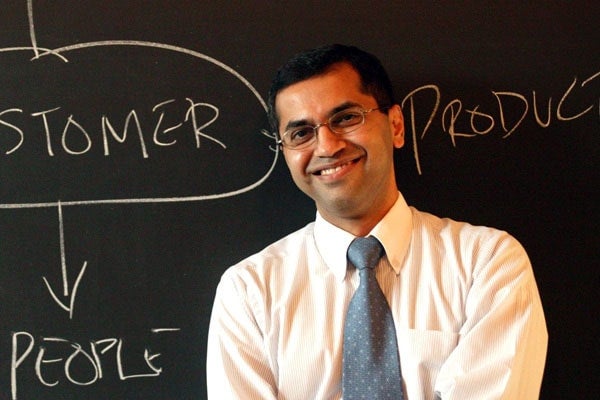
Want to kickstart the Canadian economy? Try "indovation", says U of T prof
Published: January 26, 2015
University of Toronto president Meric Gertler is visiting India from January 27 to 31, on his first visit to south Asia since becoming president.
While in India, Gertler will co-host a workshop on Universities in Urbanization: Building Healthy, Sustainable & Innovative Cities with the Indian Institute of Technology-Bombay, discuss cities and urbanization with India’s largest and oldest business organization, and sign a Memorandum of Understanding with Tata Consulting Services, the second largest IT service provider in the world.
U of T has strong ties with India. More than 600 students from India are studying at U of T – the second largest number of international students after China. Hundreds of U of T alumni live in India and U of T researchers collaborate both formally and informally with Indian colleagues.
As the president gets ready for his trip to India, U of T News explores some of the many connections between the University of Toronto and India.
Canada can learn a lot from “indovation”, says Dilip Soman, Rotman marketing professor and head of U of T’s India Innovation Institute.
The term is a portmanteau of the words “Indian” and “innovation” and it means taking existing constraints – such as a shortage of funds or raw materials – into account when developing a response to actual problems.
Indians – and people in other countries of the so-called Global South – innovate by taking everyday materials and turning them into something new. “Frugality is at the essence of it,” Soman says. “In India, unless you can drive down costs, your idea is a non-starter.
“For example, mobile banking. That’s a classic ‘indovation’. It came about as a response to a particular problem, and it was developed in India and adopted in the west,” says Soman.
Soman, who grew up in India, has taught at Rotman since 2003 and headed the institute since its inception in 2011. He’s eager to point out other ways in which the west can learn from India.
“Look at health care. There’s a company in India called mQure – it’s basically a service where a doctor in rural India can upload your health records to a server via text message,” he explains. “The health-care market there is so fragmented, the chance that you’ll see the same doctor twice are close to zero. Having that medical history makes a massive difference. And the technology is so simple and so frugal.
“And Canada – which has many rural, far-flung areas, could import something like mQure where you don’t have to rely on high-speed internet but can use simple text messaging instead.”
He gives another example: corporate organization. “Look at Procter and Gamble. They have a head office in Cincinnati and they have manufacturing plants somewhere else. They make all their shampoo in one place and put it on trucks and send it all across the country. But in the Indian model, you’d have local businesses all over the country that would manufacture the shampoo to the parent company’s specifications, so you wouldn’t have to do any transport and packaging.”
The India Innovation Institute was set up by former President David Naylor who was concerned that U of T’s many India-related research and teaching was being done in isolation, Soman says. Jointly run by U of T’s Rotman School of Management and the Munk School of Global Affairs, it also includes researchers and students from other faculties, such as engineering and medicine. Its four areas of concentration are research, community engagement, curricula and accumulating a database of papers and research on India.
“Right now we’re working on developing a dataset on reverse innovation; the idea that innovations that have developed in the global south can be scaled back to the western world,” Soman says. “We have white papers on several topics: crowd-funding, agriculture, and retail and investment opportunities. The goal is to build up a database of information that both researchers as well as practitioners can use.”
Outreach is important, Soman says, and the institute has organized several lectures and seminars on topics such as the Indian elections, innovation management and the changing face of India – the entire spectrum in terms of Indian-related activities. The free talks attract audiences of 150-200 people, Soman says. And the institute also works with outside communities – it recently helped develop an India-related lecture series in Cobourg.
A behavioural scientist by training, Soman is interested in using insights from consumer psychology to help people help themselves. Here, again, he thinks Canada can learn from India.
“In the western world we have this very stylized way of thinking about what financial well-being is – it means you have a bank account, you have a retirement fund, you have financial assets and so forth. But I was in India about eight years back and I was talking to a farmer who had absolutely none of these things and I said, aren’t you worried about retirement? And he said, ‘No, I have four sons. Why would I worry?’ And it forced me to think about what the fundamental model here is. Perhaps we in the West should start thinking about developing models of financial well-being that embed the family in it, that embed social structures.”
Terry Lavender writes about global and international issues for U of T News.



